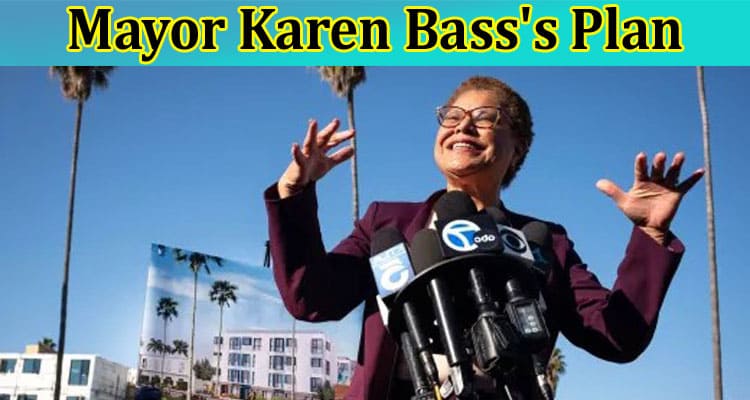Los Angeles, the iconic sprawling metropolis, is renowned not only for its vibrant culture, Hollywood glamour, and booming economy but also for its diverse and dynamic populace. This city, pulsating with life and creativity, is a magnet for individuals seeking opportunities and experiences that are quintessentially Californian. However, beneath the glitz and glamour of its surface, Los Angeles grapples with significant urban challenges that threaten to undermine the quality of life of its residents. Among the most pressing issues are the notorious traffic congestion that clogs its vast network of freeways and the growing visibility of homelessness, particularly marked by the tents that have become a common sight along the downtown streets. These issues, deeply intertwined with the city’s social and economic fabric, present complex challenges that require thoughtful, comprehensive solutions.
Understanding the magnitude and multifaceted nature of these problems, Mayor Karen Bass, a leader cognizant of her city’s potential and its pitfalls, has stepped up with an ambitious and multi-pronged plan to tackle these issues. With a deep commitment to the welfare of Los Angeles’s diverse population, Mayor Bass’s approach is not just about implementing quick fixes but about initiating long-term, sustainable change. Her strategies are designed to address the root causes of traffic congestion and homelessness, aiming to create a more livable, equitable, and resilient Los Angeles. By confronting these challenges head-on, Mayor Bass is setting in motion a series of initiatives that promise to transform the city’s landscape, enhancing its appeal as a global urban center while ensuring it remains a place where all residents can thrive.
Understanding the Challenges: Traffic and Homelessness
Los Angeles’s traffic woes are legendary. The city consistently ranks among the top for the worst traffic congestion in the United States. This not only affects the quality of life for its residents but also has broader implications for the environment and the city’s economy. Concurrently, homelessness has been a growing concern, with an increasing number of individuals living in tents along the downtown streets. This situation poses not only a humanitarian crisis but also impacts the safety, sanitation, and overall well-being of the community.
Mayor Bass’s Holistic Approach to Traffic Management
One of Mayor Bass’s primary strategies is to revolutionize the city’s approach to traffic management. Recognizing that traditional methods are no longer sufficient, her administration is exploring innovative solutions. This includes investing in smart traffic systems that use real-time data to optimize traffic flow and reduce congestion. Additionally, there is a strong emphasis on enhancing public transportation. By expanding the metro and bus networks and making them more efficient and user-friendly, Mayor Bass aims to encourage more residents to opt for public transport, thus reducing the number of vehicles on the roads.
Encouraging Green Transportation
In an era increasingly defined by environmental consciousness, Mayor Karen Bass is steering Los Angeles towards a greener and more sustainable future with a strong focus on green transportation initiatives. This shift is in direct alignment with global environmental goals aimed at reducing carbon emissions and combating climate change. Central to her plan is the enhancement of the city’s electric vehicle (EV) infrastructure. Recognizing the pivotal role of EVs in the transition to sustainable transportation, Mayor Bass is championing the increase of electric vehicle charging stations throughout Los Angeles. This move not only facilitates and encourages the adoption of EVs by making charging more accessible and convenient but also signals the city’s commitment to leading the charge in environmental stewardship.
Additionally, Mayor Bass’s administration is actively working to incentivize residents to shift towards electric vehicles. Through a combination of subsidies, tax rebates, and other financial incentives, the aim is to make EVs a more viable and attractive option for a broader segment of the population. Complementing these efforts is a significant investment in improving the city’s infrastructure for cyclists and pedestrians. By creating more bike lanes, enhancing pedestrian pathways, and ensuring safer streets, these initiatives encourage people to opt for more eco-friendly modes of transport. This not only helps in easing the notorious traffic congestion in Los Angeles but also significantly contributes to reducing the city’s overall carbon footprint. Through these multifaceted efforts, Mayor Bass is not only addressing the immediate concerns of traffic and pollution but is also positioning Los Angeles as a leader in the global movement towards sustainable urban living.
Addressing Homelessness with Compassion and Effectiveness
When it comes to the issue of homelessness, Mayor Bass’s approach is both compassionate and pragmatic. Her administration is working on increasing affordable housing options and providing more shelters with necessary services such as mental health care, addiction treatment, and job training. The goal is to offer a sustainable solution that not only provides immediate shelter but also assists individuals in transitioning to stable, permanent housing.
Revitalizing Downtown Los Angeles
The revitalization of downtown Los Angeles is a key component of Mayor Bass’s vision. This includes not just the removal of tents from the streets, but also transforming these areas into safe, clean, and vibrant spaces for all residents to enjoy. Plans include the development of more public spaces, such as parks and community centers, and supporting local businesses to create a thriving downtown area.
Mayor Karen Bass’s comprehensive approach to tackling Los Angeles’s traffic and homelessness issues reflects a deep understanding of the city’s unique challenges and opportunities. By integrating technological advancements in traffic management with a strong commitment to green transportation, she is paving the way for a more efficient and sustainable urban mobility future. Simultaneously, her empathetic yet practical strategies for addressing homelessness aim to provide dignity and hope to the city’s most vulnerable, while also enhancing the overall quality of life in Los Angeles. As these plans come to fruition, they hold the promise of transforming Los Angeles into a more livable, equitable, and forward-looking city, setting a precedent for urban centers around the world.








